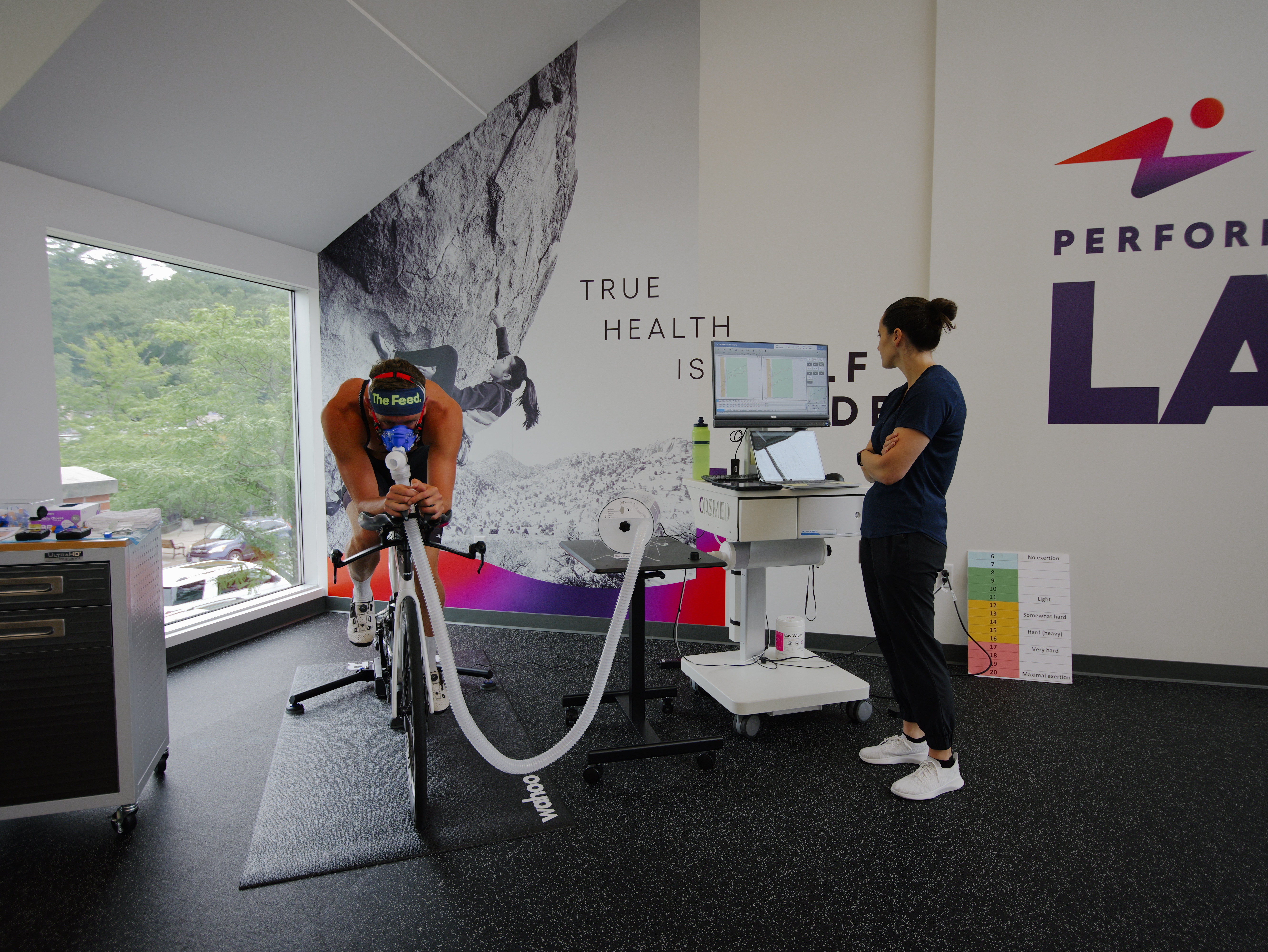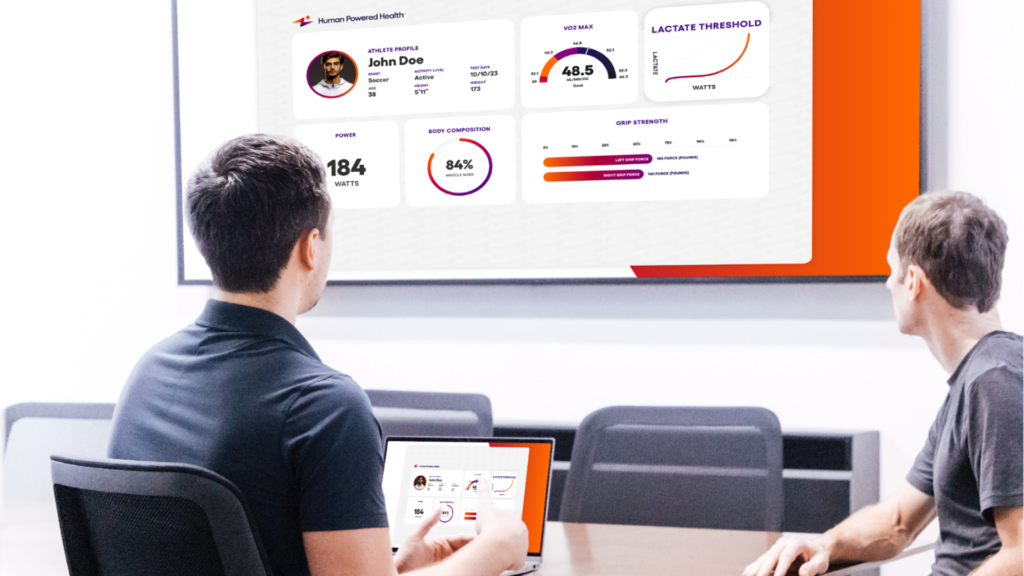Metabolic health is a rising concern in the United States. According to the Center for Disease Control (CDC), on average someone dies from cardiovascular disease every 30 seconds. If someone asked you what the most important longevity metric is, what would you say? We’d say VO₂max. Keep reading to discover how VO₂max impacts your longevity, its role in cardiovascular health and tips to improve your VO₂max for a longer, healthier life
VO₂max refers to maximal oxygen consumption, a key component of aerobic fitness. It measures the maximum level of oxygen that a person’s body can use during exercise. VO₂max reflects the efficiency of your cardiovascular and respiratory systems in supplying oxygen to your muscles, and how effectively those muscles can use that oxygen for energy production.
Your VO₂max depends on a few key components including age, gender and fitness level. Essentially, VO₂max gives detailed insight into your aerobic endurance and overall fitness level.
VO₂max is a strong predictor of endurance, which is vital for performing sustained physical activity. It also serves as an early indicator of potential heart or lung issues, offering insights into overall cardiovascular health.
A higher VO₂max translates to better endurance and the ability of your body to handle more intense efforts. It also means your body becomes more efficient at delivering blood and oxygen to your muscles during exercise.
Regularly tracking your VO₂max allows individuals to monitor progress, adjust their fitness routines and ultimately improve their performance, health and longevity. By understanding your VO₂max, you can tailor your workouts to improve endurance, speed and stamina.
As one of the best indicators of longevity, a high VO₂max is closely linked to greater health outcomes, including a lower risk of chronic diseases such as heart disease. People may shy away from a VO2max test because they don’t see themselves as an elite athlete. However, this metric is crucial for everyone, regardless of fitness level.
Since VO₂max reflects the health of your cardiovascular and respiratory systems; individuals with higher values tend to have better heart function, more efficient lungs and healthier blood vessels, all of which contribute to a longer, healthier life.
Doctors and longevity specialists such as Peter Attia and Andrew Huberman, are advocates for the long-term benefits of improving your VO₂max. They use the analogy of thinking about it as an investment account for your health and longevity.
A Mayo Clinic study found that subjects who ranked in the top third of VO₂max results had a 45% reduced risk of death from any cause compared to subjects in the lower third. Put simply, improving your aerobic capacity and fitness levels is an amazing way to add years onto your life and life onto your years.
With the rise of smartwatches and accessibility of mobile health metrics, it’s important to know the difference between a watch-estimated vs. lab-tested VO₂max. A smartwatch can give you data on your heart rate, steps and calories burned. However, with many of the metrics, your smartwatch uses a generic algorithm based on factors like your height and weight. This algorithm will give you a general range, but a lab test is the only way to uncover your accurate VO₂max.
Specifically, for the VO₂max, a smartwatch misses out on the key component of testing: the metabolic cart. To accurately measure and analyze your VO₂max, measuring gas exchange is required. In a lab, you can observe oxygen extraction and when your body switches dual utilization to using only carbohydrates, which marks your VO₂max.
Now that you understand the difference between smartwatch estimates and lab-grade testing, how do you uncover your true VO₂max?
This lab assessment is relatively quick, with the average test being completed in 7-15 minutes depending on the individual. It measures milliliters of oxygen per kilogram of body weight per minute. A VO₂max test involves gradually increasing the intensity of exercise while monitoring the participant’s heart rate, breathing rate and oxygen consumption. VO₂max testing can be done on either a treadmill or a bike.

VO₂max testing can be hard to access for the average person. Often only collegiate and professional sports facilities have the equipment needed to complete the testing. However, the general population does not have access. So, where can people who are looking to learn more about their health and performance go to get the data they need?
That’s what Human Powered Health was designed to solve. With Performance Labs in the Minneapolis, Boston, Wellesley and now Scottsdale areas, we are making this beneficial testing more accessible than ever.
With our all-in-one Performance Labs, Human Powered Health provides accurate insights about your body. We offer a wide range of assessments, and the process doesn’t end when you finish your testing.
After your assessment, you’ll sit down with a Ph.D. level physiologist to review your data and walk through application. They will help you transform the raw data into actionable next steps based on your fitness goals. You’ll leave with clarity on what to focus on and how to apply the information to get relevant results.

When speaking on the vision of Human Powered Health, Chief Performance Officer Dan Cohen said, “That’s where we’re really going to be focusing on going downstream to the broader population. The 270 million Americans who are metabolically compromised and really making this stuff accessible to them.”
There are a few ways to improve your VO₂max in the short and long-term. While VO₂max has a genetic component, it also can be trained through a high volume of aerobic activity, such as running, biking and swimming.
In the short term, high-intensity interval training can increase your cardiovascular capacity and your VO₂max. However, this isn’t always the most effective way. Your VO₂max is the maximum amount of oxygen your body can use, so training for short-term gains shouldn’t be the only goal.
On the other hand, long-term gains can be achieved through higher training volume, even with a lower intensity. Increasing how many times you run in a week or training longer in your zone 2 range is a great way to improve your VO₂max and cardiovascular health long-term.
Training for your VO₂max involves a lot of zone 1 and zone 2 heart rate intensities, mixed with intervals through zones 3, 4 and 5. Testing also helps you pinpoint your ideal training zones and intensity ranges, which will push your aerobic system without causing burnout.

Research shows VO₂max is the number one predictor of all-cause mortality. It’s not a flashy number for Olympians to show off, it has serious impacts on everyone regardless of fitness levels. Improving your VO₂max is a powerful investment in your long-term health and longevity.
Now that you know the importance of VO₂max, we hope you’ll invest the time into understand your personal VO₂max and take steps towards improving it. You’re not alone on your journey to health, and as always, remember that True Health is Self-Made.
Human Powered Health is staffed with Master's and PhD-level performance physiologists who are dedicated to helping you improve your health and performance. Our product is a healthier you, and we have the science to make you better than ever.
Human Powered Health uses high-precision, research-grade technology for all assessments in order to provide a superior level of service and quality for anyone who wants to learn more about their health and performance metrics.
We are on a mission to power health and athletic performance for motivated humans. Your body belongs to you. You deserve accurate information about it. We give everyone the data and expertise to fine-tune their own health and athletic performance. Because knowledge is power, and true health is self-made.